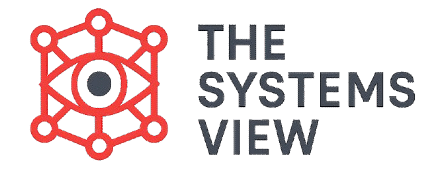Imagine a bubble that must constantly repair its own skin, using materials drawn from the outside world. This bubble can never be told what to do, yet it must adapt to everything the world throws at it. This paradox is the heart of Autopoiesis.
Autopoiesis defines a living system as one that is organizationally closed (focused only on self-creation) yet structurally open (dependent on outside resources). This idea, developed by Humberto Maturana and Francisco Varela, shows that the stability of life depends on maintaining a delicate boundary between the system’s own internal rules and the chaotic external world.
This article explores the systemic paradox: how a system, whose sole purpose is itself, manages to survive by constantly interacting with things that are not itself.
1. The Paradox of Closure and Openness
The stability of any living system depends on two contradictory forces working together. This defines the core paradox of Autopoiesis.
Organizationally Closed: The Logic of Self
A system is organizationally closed if the entire network of its processes constantly refers back to the continuation of that network itself. The internal logic is circular. Every component produced is immediately used to produce or maintain other components within the system.
- Goal: The system’s purpose is not external (like building a car). Its purpose is Autopoiesis—the continued maintenance of its own identity.
- Autonomy: This closure makes the system fully autonomous. Its survival is dictated only by its own internal rules, regardless of the world outside.
Structurally Open: The Need for Matter and Energy
However, no living system is physically closed. The system must be structurally open to survive.
- Dependency: A living cell, for example, must take in matter (nutrients) and energy from the environment. It must also expel waste.
- The Paradox: The system depends entirely on the outside world for the raw materials it uses, yet it must strictly maintain its internal organizational rules against the disruption these outside materials could cause.
The system’s organization is maintained only by constantly replacing its parts. This replacement requires the outside world.
2. Structural Coupling: The Mechanism of Interaction
If the system is organizationally closed, it cannot accept direct instructions or commands from the environment. So, how does a living system respond to changes like a shift in temperature or the presence of food? The answer is Structural Coupling.
The Environment Does Not Inform, It Triggers
In Autopoiesis, the environment does not send information to the system in the way a computer accepts data. The environment only provides a trigger or a perturbation.
- Trigger: The external event bumps against the system’s boundary.
- Internal Change: The system’s organizationally closed network must then internally reorganize itself in response to the trigger.
The system only perceives changes that its internal structure is designed to recognize and process.
- Example: When a dog hears a bell, the sound wave is the trigger. The dog’s nervous system (its structure) is internally organized to respond to that trigger with a jump or a bark. The environment did not command the dog to jump; it merely provided the external force that triggered the internal, pre-determined response.
Structural Drift and Adaptation
This continuous structural coupling is the process of adaptation itself. Over time, the environment and the system mutually trigger each other. Neither one controls the other, but they co-exist and change together.
- This constant interaction leads to structural drift. The system’s physical structure slightly changes so that it becomes better matched to its environment.
- This ensures the system maintains its Autopoiesis, as long as the structural changes allow the self-creation to continue. If the environment triggers a change that makes the system unable to maintain its organization, the system dies.
The genius of Autopoiesis is its explanation of autonomy. The living system is free from control because its processes are organized only by its own internal rules. The outside world can only trigger the system; the system itself decides the nature of the response, making it the true author of its own survival.
3. Autopoiesis and the Limits of Perception
The organizational closure of an autopoietic system has profound implications for how we understand knowledge and reality.
Perception is Self-Referential
Maturana’s work in the biology of cognition showed that all living systems only take in data that is relevant to their own internal organization.
- No Objective Reality: Since the system’s structure dictates all its reactions, the world it experiences is a reflection of its own internal rules. There is no single, independent, objective reality waiting to be known.
- Observer Responsibility: This concept reinforces Second-Order Cybernetics: any knowledge claimed by an observer is actually a description of the observer’s unique relationship with the system, not a simple, objective fact.
This is why Autopoiesis is essential to understanding Systems Thinking. It shows that life is a continuous, self-referential process that defines its own world through its own organizational logic.
Conclusion
The Paradox of Autopoiesis lies in the critical balance between internal closure and external openness. A living system maintains its identity by remaining organizationally closed (dedicated to self-production) while being structurally open (dependent on external materials). The continuous, non-controlling interaction with the environment is achieved through structural coupling, where the outside world acts only as a trigger. This foundational concept proves that the ultimate autonomy of a living system is based on its ability to define its own internal rules of existence.



